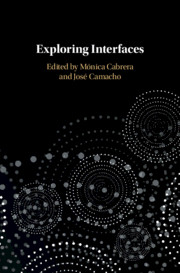Book contents
- Exploring Interfaces
- Exploring Interfaces
- Copyright page
- Contents
- Figures
- Tables
- Preface
- Acknowledgments
- Contributors
- Introduction: The Road to Interfaces
- I Syntax–Lexicon Interface
- II Syntax–Semantics Interface
- 5 Negative Idioms
- 6 Scope, Syntax, and Prosody in Russian as a Second or Heritage Language
- 7 On the Syntax of Pronominal Clitics: A View from Greek
- III Linearization
- Index
- References
6 - Scope, Syntax, and Prosody in Russian as a Second or Heritage Language
from II - Syntax–Semantics Interface
Published online by Cambridge University Press: 03 August 2019
- Exploring Interfaces
- Exploring Interfaces
- Copyright page
- Contents
- Figures
- Tables
- Preface
- Acknowledgments
- Contributors
- Introduction: The Road to Interfaces
- I Syntax–Lexicon Interface
- II Syntax–Semantics Interface
- 5 Negative Idioms
- 6 Scope, Syntax, and Prosody in Russian as a Second or Heritage Language
- 7 On the Syntax of Pronominal Clitics: A View from Greek
- III Linearization
- Index
- References
Summary
The study of second language (L2) acquisition from the generative perspective has, traditionally, focused primarily on narrow syntactic and morphosyntactic phenomena (for an overview, see, e.g., Ionin, 2012; White, 2003). The last two decades have seen a rise in L2 studies that address phenomena at the syntax–semantics and syntax–pragmatics interfaces, investigating such topics as grammatical tense and aspect, scope ambiguity, article semantics, and the interpretation of overt vs. null pronouns, among others (for an overview, see Slabakova, 2008, 2016). Across both (morpho)syntactic and interface phenomena, studies find evidence of crosslinguistic influence (transfer) from the learners’ first language (L1), but also find that learners are able to acquire novel properties of their L2 that are not present in their L1 and that are often underdetermined in the input (see Schwartz & Sprouse, 2013; Slabakova, 2016).
Information
- Type
- Chapter
- Information
- Exploring Interfaces , pp. 141 - 170Publisher: Cambridge University PressPrint publication year: 2019
References
References
Accessibility standard: Unknown
- 7
- Cited by
